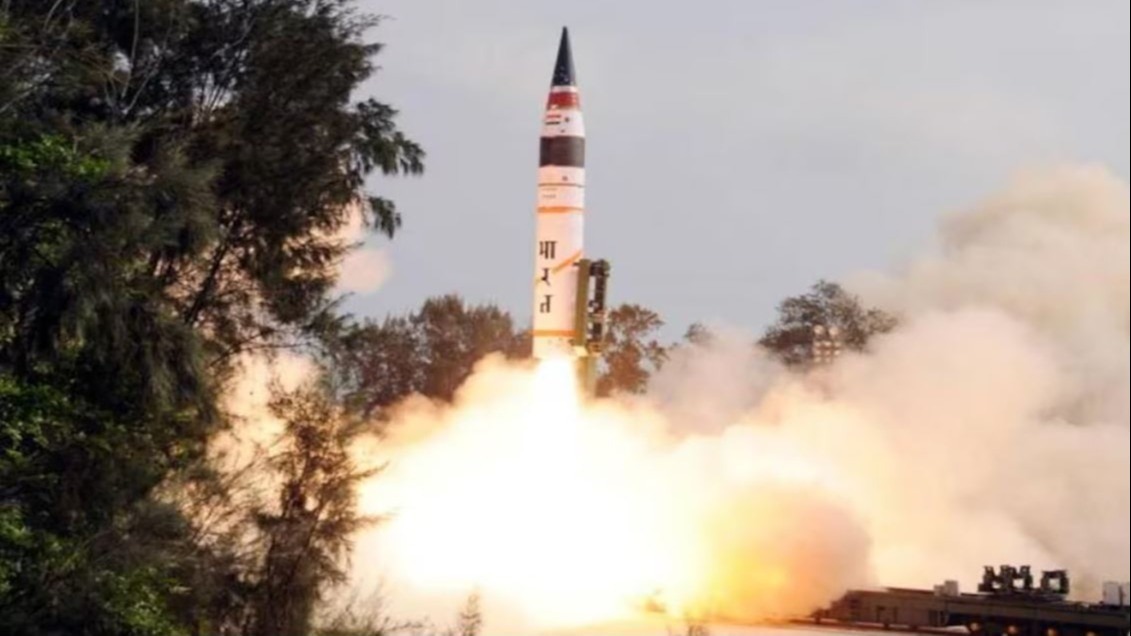
 Unlocking the Secrets: India’s Successful Test of a 5,000 KM Range Ballistic Missile
Unlocking the Secrets: India’s Successful Test of a 5,000 KM Range Ballistic Missile
In a groundbreaking development on Monday, India successfully tested an intercontinental ballistic missile (ICBM) with a staggering range of 5,000 kilometers. This missile, equipped with Multiple Independently Targetable Reentry Vehicles (MIRV), can launch multiple targets simultaneously. The test has put the entire Chinese territory within its reach, marking a significant advancement in India’s defense capabilities.
The Global Missile Landscape
As of now, only five countries – China, the United States, Russia, France, and the UK – possess the ability to launch missiles with MIRV technology. These nations exhibit this capability in either land-based or sea-based categories.
Agni-5 Testing and International Response
According to reports, China dispatched its second research vessel to the Indian shores a few weeks before the Agni-5 missile testing. Speculations suggest that the ship is present to monitor and gather data related to this significant test. Interestingly, a vessel from China has already been spotted near the Maldives’ coast, seemingly keeping a close eye on the developments.
On February 23, the Chinese vessel ‘Jiang Yang Hong 01’ set sail from the port of Qingdao, as reported by maritime analysis provider Marine Traffic.
Tracking the Chinese Research Vessel
Open-source intelligence specialist Damien Simon revealed on social media platform X that the 4,425-ton Chinese vessel entered the Bay of Bengal. The ship, named ‘Jiang Yang Hong 01,’ is currently less than 260 nautical miles (approximately 480 kilometers) away from the Visakhapatnam coast, which is considered a base for India’s nuclear-powered ballistic missile submarines.
India’s Notice to Airmen (NOTAM)
On March 7, India issued a Notice to Airmen (NOTAM) covering the Bay of Bengal and the vast expanse of the Indian Ocean Region (IOR) up to 3,550 kilometers, alerting neighboring countries about the possibility of missile testing. This NOTAM, a mandatory precursor to missile or rocket tests, hinted at the strategic importance of the impending exercise.
There is speculation that the ‘spy’ ship from China may have witnessed the entire missile test, gathering crucial data on its range and capabilities.
China’s Claims and Western Concerns
China insists that these vessels are purely for research purposes. However, not only India but some Western nations also suspect that China’s ‘scientific research’ ships are, in reality, collecting sensitive data in the Indian Ocean Region, especially concerning the naval operations of its adversaries.
Historical Instances
This is not the first time a Chinese vessel has entered the IOR just before missile testing. In November 2022, a Chinese research ship, ‘Yuan Wang 06,’ entered the region days before a missile test. However, India later canceled the NOTAM.
In December of the same year, India issued another NOTAM for testing Agni-5 from Abdul Kalam Island in Odisha. This time, China’s Yuan Wang 05 entered the IOR.
China’s Dominance in Research Vessels
China boasts the world’s largest fleet of civilian research vessels. A report from the American Think Tank Center for Strategic and International Studies revealed that out of the 64 such vessels operational globally since 2020, at least 80% showed indicators suggesting their involvement in military-related activities.
In the ever-evolving landscape of global geopolitics, India’s successful testing of the Agni-5 missile has significant implications. As the nation continues to advance its defense capabilities, the vigilant eyes of international players, particularly China, remain fixated on the Indian Ocean Region.
Read More: Side Effects Of Consuming Fennel And Ajwain Water Early Morning Revealed By Expert

 Share
Share



